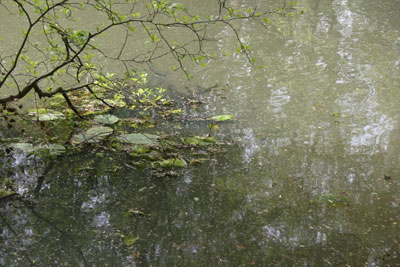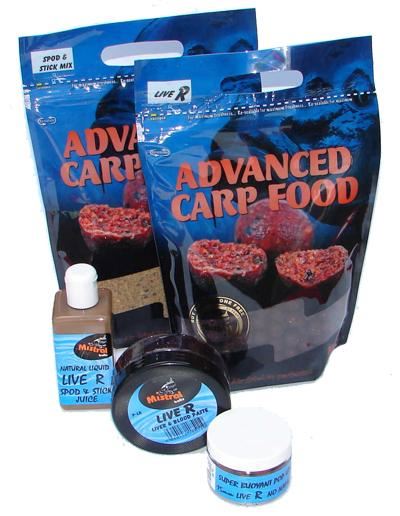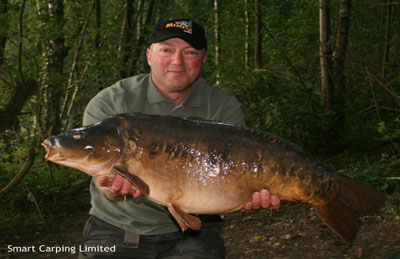 As carp fishing becomes increasingly more popular, and our busy lifestyles mean that time on the bank is more precious than ever, the time we can get out and fish is normally when everyone else can get out and share the bank side with you. This often means you are not only working hard to try and locate the fish but you are competing with other anglers keen for a slice of the action.
As carp fishing becomes increasingly more popular, and our busy lifestyles mean that time on the bank is more precious than ever, the time we can get out and fish is normally when everyone else can get out and share the bank side with you. This often means you are not only working hard to try and locate the fish but you are competing with other anglers keen for a slice of the action.
Not all of us can afford those ultra expensive syndicate tickets which allow us fishing on a quiet tranquil lake with nothing to disturb us apart from the squawking of the ducks and coots and the rustle of the windblown trees and reeds. So for the average club carp angler this angling pressure is a hindrance in your ultimate aim to catch fish. With this in mind we find ourselves needing to work harder to locate and capture carp during these difficult busy times.
At this point we need to use watercraft to help us turn a camping session into a successful carp fishing session. Carp like all animals need a few basic things to survive. Food, shelter and living space, to keep them living happy, so to be successful we need to understand these three basics rules and put them into a fishing scenario. Firstly we will need to understand where the fish are now or where they are going to be. Secondly we need to try and present bait in front of these carp in a place where they are happy to eat it when they want to eat it. Lastly we need to work out a rig that is subtle enough to fool the fish and therefore get a bite but also strong enough to get the fish out of their environment without imparting any damage to the carp in the process.
 Location
Location
With the temperature dropping slowly and the days getting shorter the carp will still be in their summer habitats, patrolling the close margins or around an island. The carp will travel from one bloodworm bank to another as they spend the day searching for food. Feeding fish will often give themselves away by bubbling swirling or simply head and shouldering out of the water. This often takes place during the early morning or the late evening but they can behave like this all day long so keep your eyes upon the lake looking for fish to show. Wear a pair of Polaroid glasses and watch the water margin spots for carp close in – or as they pass over a shallow bar when their dark figures can been seen over the light lake bed.
If you have a new warm wind blowing into a corner peg, set up with the wind in your face. The carp will follow the lakes natural larder as it blow over toward you. If the weather is very warm don’t ever forget to try a zig rig; carp are happy feeding at every depth in the lake, not just on the bottom because it is easy for us!
If the fish start showing on the other side of the lake and you have had no action or indication, do not hesitate in moving over to the showing fish because if the fish aren’t in front of you you aren’t going to catch them.
Bait
The lake’s natural larders which have held an abundance of naturals all summer long will start to fade as the Autumn temperatures start to drop. The carp will start to feed with more urgency as they try to pack extra weight on to cope with the coming winter. This extra urgency the carp are feeling often makes them drop their guard and we can often have some very good catches.
However we must use this opportunity to fish with the best quality baits we can, from manufacturers like Mistral, Mainline, Dynamite and CC Moores. After all, if the carp don’t like the bait they just aren’t going to pick it up.
Use only enough bait to create a competitive feeding environment in the swim. You can always add more bait but once it’s in the swim you can’t take it out again. If the lake has seen a lot of boilies over the season try and be a little different from the rest. Use a small dumbbell or a whittled down boilie rather than round baits. This change in shape, although it has the same food signal, is a different shape which carp will not recognise as danger like they could a round bait Use small hooks if the peg you are fishing is suitable. i.e. Where it is not weedy or snaggy, where you would normally use a hook a size or two bigger than the normal hook you would select to suit your bait. With the small bait, fish long hairs to try to give the bait as much freedom of movement as possible. To prevent the bait from tangling with the hook during the cast, pull the hook length and rig through the middle of a small walnut size PVA bag full of low oil pellets.
 Our fishing year draws to an end for most fair weather carpers who will miss out on possible some of the best fishing of the year. The colder days and darker colder nights make the banks a quiet desolate place. Where once it was difficult to find a swim, now the whole lake is yours to fish. The carp will have got their winter weight on and their physical condition will be perfect, you may have to work hard but the rewards are worth the work – after all, whoever said carping was easy?
Our fishing year draws to an end for most fair weather carpers who will miss out on possible some of the best fishing of the year. The colder days and darker colder nights make the banks a quiet desolate place. Where once it was difficult to find a swim, now the whole lake is yours to fish. The carp will have got their winter weight on and their physical condition will be perfect, you may have to work hard but the rewards are worth the work – after all, whoever said carping was easy?
Here’s a nice autumn-caught 35lb 10oz on a balmy sunny morning. Life just does not get any better than this.
Tight Lines










